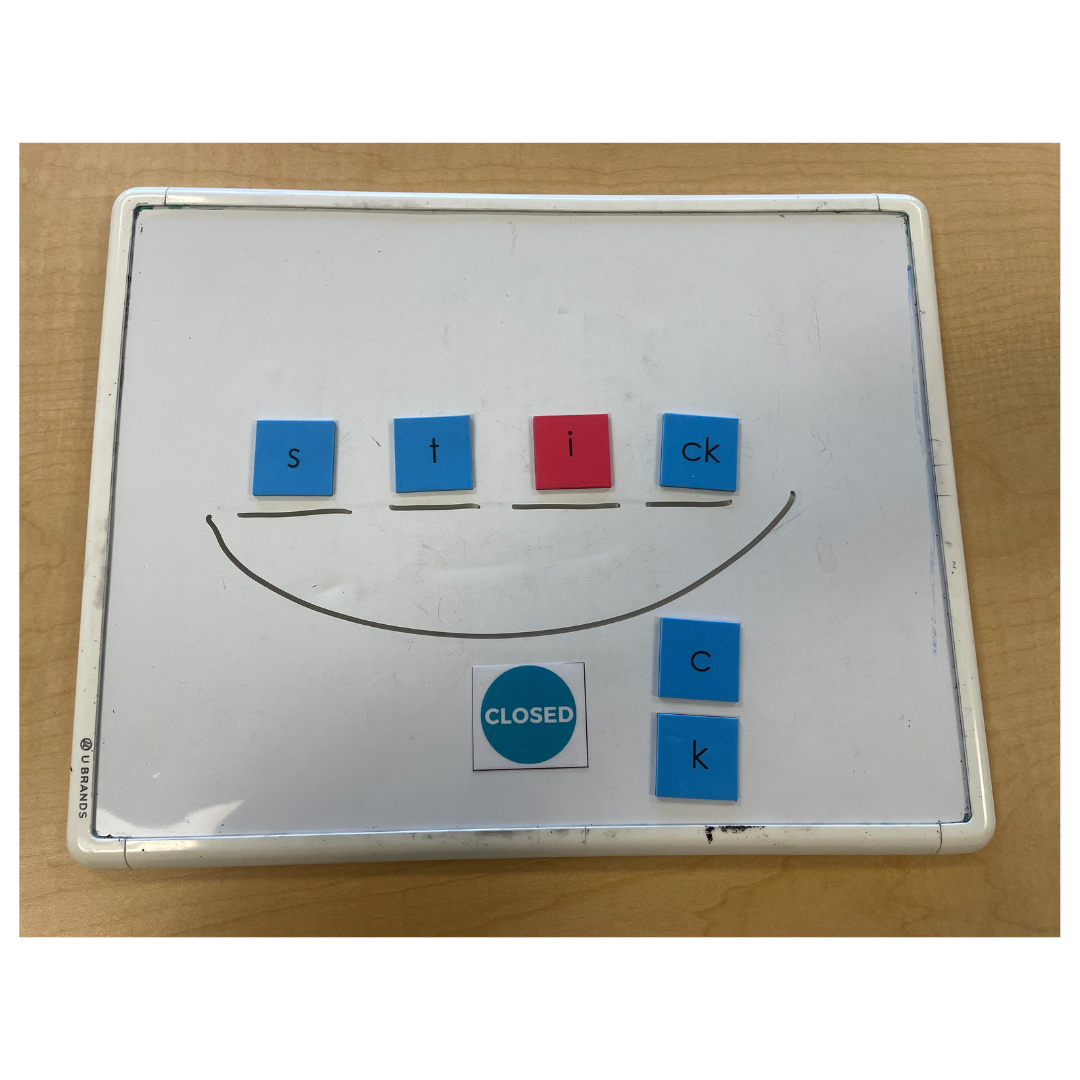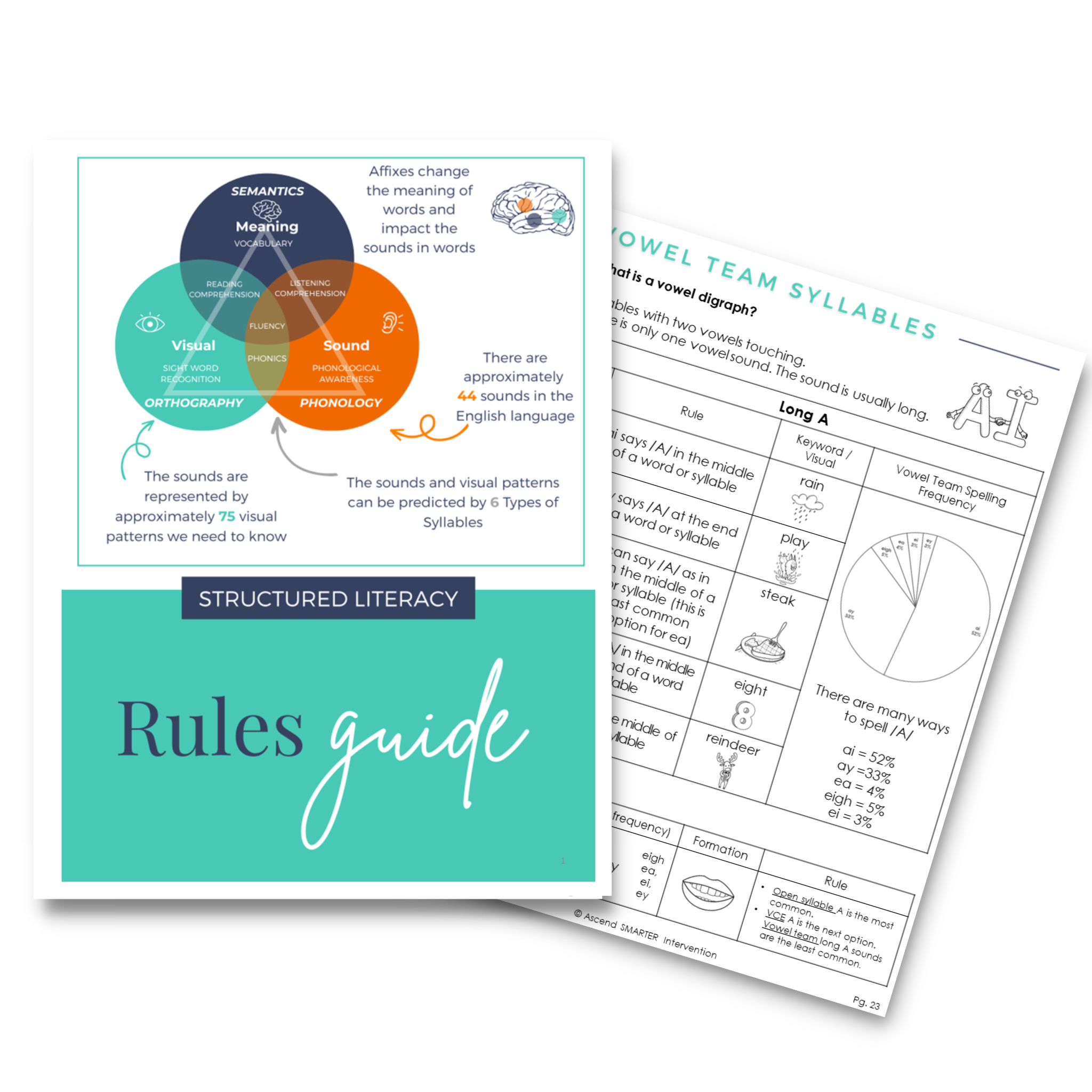Closed Syllables - The Reading and Spelling Rules That Nobody Taught You
Maybe it’s just us, but it seems like there are so many rules we never learned as we were learning to read and spell.
And honestly, knowing some of these rules would have made reading (and spelling!!!) feel much less like a guessing game.
The six syllable types are important as we consider many of the reading and spelling rules
Never heard of the six syllable types? Not to worry, you can read more about them here! Syllable types are important because they help to predict the vowel sound.
Sometimes vowels create a short vowel sound (typically the case in closed syllables), sometimes they create a long vowel sound, and sometimes they create a different sound altogether.
Today we are talking about -
Closed Syllables
A closed syllable occurs when a vowel is closed in by one or more consonants at the end of the syllable (e.g., in, cat, blast). When the vowel is closed in, it makes a short sound.
There are a few exceptions to this rule, patterns like all, and, ank, ing, ink, ild, old, ost, oll are welded sounds in which the vowel sound is distorted or long but for the most part, a vowel that is closed in by a consonant will make a short sound!
How To Teach Closed Syllables - Reading Process
We always follow a step-by-step process to teach closed syllables:
1 - Find/color the vowel in red
This is important because we need to be able to visually see the vowel in order to determine what type of syllable we have.
2 - Determine whether any consonants follow the vowel (except Y, W, or R)
This is important because while Y, W, and R can be consonant sounds, they tend to act as vowel or create vowel sounds when they follow a vowel.
3 - If a vowel is closed in by one or more consonants, mark the vowel with a breve
A breve looks like a wide U or the bottom of a smiley face. It signals that the vowel sound is short (as in apple, edge, itch, otter, or up)
4 - Read the syllable (remember the vowel sound is short)
If there are multiple syllables, blend each syllable together to read the entire word. A syllable is a word or part of a word with one vowel sound so if there is more than one vowel followed by a consonant, the word has more than one syllable.
How To Teach Closed Syllables - Spelling Process
When teaching spelling, we like to use a 4-Step Process:
1 - Identify how many syllables are in the word
We like to have students scoop the syllables, this is important because each syllable needs at least one vowel sound (which might be a closed syllable!)
2 - Identify how many sounds are in the word
We like to have students underline or dot the number of sounds they hear.
3 - Identify the type of sound
Is the sound a vowel sound or a consonant sound? Is the vowel sound short or long?
4 - Identify the type of syllable
This is important because specific syllable types have specific spelling rules. There are a few spelling patterns that are specific to closed syllables.
Closed Syllable Spelling Patterns
Let’s take a look at a few of the spelling rules that are specific to closed syllables:
CK says /k/ at the end of a closed syllable
Double an f, l, s, or z at the end of a closed syllable
TCH says /ch/ at the end of a closed syllable
DGE says /j/ at the end of a closed syllable (no English word ends in J)
Now, we can see when looking at the frequency, spelling /k/ with a CK is not common (it only happens 6% of the time, but - it always happens at the end of a closed syllable). We can also see that spelling /j/ with a DGE is not common (it only happens 5% of the time, but again, it always happens at the end of a closed syllable).
Understanding these rules can take the guesswork out of spelling and it can solidify our reading ability. We always tell students it’s our “why” behind why words are read and spelled in certain ways.
Explicitly Teaching Closed Syllables
We typically start our instruction with closed syllables. We begin with closed syllables because they are the most common syllable type in the English language. They make up nearly 50% of all syllables in a text. Many words are made up of more than one syllable (e.g., sunset, Wisconsin, etc.) but when we break them apart, we often have at least one closed syllable in many of our words.
It’s also a nice way to introduce blending to students as they begin to “sound out” or decode words. We start with simple words like “at” or “in” which are closed syllables and then we can start expanding those words into “sat” or “win” as students start progressing. We can work on adding consonants, blends, and digraphs before moving into more complex closed syllable rules.
When we teach a new pattern we start by sharing the pattern, having students practice writing the pattern while saying the sound(s) the pattern makes.
We provide a visual with a keyword. For example, if we were teaching the CK spelling pattern we would provide a picture to show “kick” and have students practice associating the CK pattern with the word “kick.”
We then provide explicit instruction on the rules the pattern follows. For example, we use CK to spell /k/ at the end of a closed syllable (or at the end of a short word touching a short vowel).
We move in a building progression from the sound level to the syllable/word level and then have students generalize to the sentence level, paragraph level, and beyond.
That’s it! While it’s certainly not simple, it is effective! And - once you get into the groove, it becomes so much easier.
How do I get started?
If you need help mastering all these rules, we’ve got you. We put all the rules we teach together in our Comprehensive Rules Guide which you can grab here! It’s a fabulous place to get started.
Or, if you’re ready for the next step and you’re looking for comprehensive lesson materials to explicitly teach all of the phonogram patterns, you can check out our systematic phonics-based curriculum, Delivering SMARTER Intervention here.





